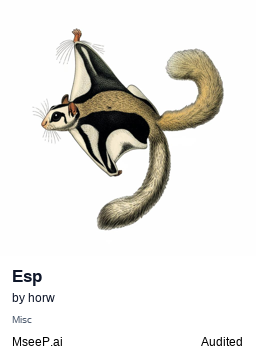About
An MVP server that consolidates ESP‑IDF build, flash, and issue‑fix commands into a single LLM‑driven interface, simplifying embedded workflows.
Capabilities

The ESP MCP Server is a lightweight, proof‑of‑concept tool that brings the full power of the ESP‑IDF build ecosystem directly into an LLM‑driven workflow. By exposing common ESP‑IDF commands—such as building, cleaning, and flashing—as first‑class MCP tools, it removes the friction of switching between a command line interface and an AI assistant. Developers can ask a chatbot to compile their firmware, inspect build logs, or push new binaries to a device with a single natural‑language request, letting the AI orchestrate the underlying shell commands.
What sets this server apart is its focus on developer productivity. Instead of manually invoking or , the MCP server bundles those calls into reusable, parameterised actions. This encapsulation means that an assistant can automatically locate the correct project directory, set environment variables like , and handle device selection—all without exposing the user to low‑level tooling details. The result is a smoother, error‑free experience for teams that rely on continuous integration or remote debugging.
Key capabilities include:
- Build orchestration – Run with optional target directories and clean options.
- Firmware deployment – Flash built binaries to connected ESP devices, with support for specifying the serial port or letting the server auto‑detect.
- Log‑driven issue resolution – Experimental logic parses build logs to suggest fixes for common errors, giving developers a guided troubleshooting path.
- Extensible command set – The PoC is intentionally modular; contributors can add new commands (e.g., , ) by simply extending the MCP tool list.
Real‑world scenarios where this MCP shines include:
- Rapid prototyping – Engineers can iterate on hardware features by commanding the assistant to rebuild and reflash in seconds, cutting down cycle time.
- Remote collaboration – Teams spread across locations can share a single MCP endpoint, allowing anyone to trigger builds or deploy firmware without needing local ESP‑IDF installations.
- CI/CD pipelines – Integrating the MCP server into a continuous integration flow lets automated agents trigger builds, run tests, and deploy firmware as part of a single workflow, improving reliability and traceability.
Because it conforms to the Model Context Protocol, the ESP MCP Server plugs seamlessly into any LLM or agent platform that supports MCP. Once configured, a chatbot can expose the server’s tools as conversational actions, enabling developers to harness powerful embedded tooling through plain English commands. This blend of low‑barrier integration, command abstraction, and AI‑guided assistance positions the ESP MCP Server as a compelling bridge between human intent and embedded development automation.
Related Servers
MarkItDown MCP Server
Convert documents to Markdown for LLMs quickly and accurately
Context7 MCP
Real‑time, version‑specific code docs for LLMs
Playwright MCP
Browser automation via structured accessibility trees
BlenderMCP
Claude AI meets Blender for instant 3D creation
Pydantic AI
Build GenAI agents with Pydantic validation and observability
Chrome DevTools MCP
AI-powered Chrome automation and debugging
Weekly Views
Server Health
Information
Explore More Servers
Weather Server MCP
Real‑time weather data for Claude Desktop
Aider MCP WebSocket Server
Programmatic control of Aider via WebSocket
Chronos MCP Server
Time zone aware date and time service via MCP
OracleDB MCP Server
Enabling LLMs to query Oracle databases via context-aware prompts
Angreal MCP Server
Discover and run angreal commands via AI assistants
OpenCage Geocoding MCP Server
Geocode addresses and coordinates via OpenCage API